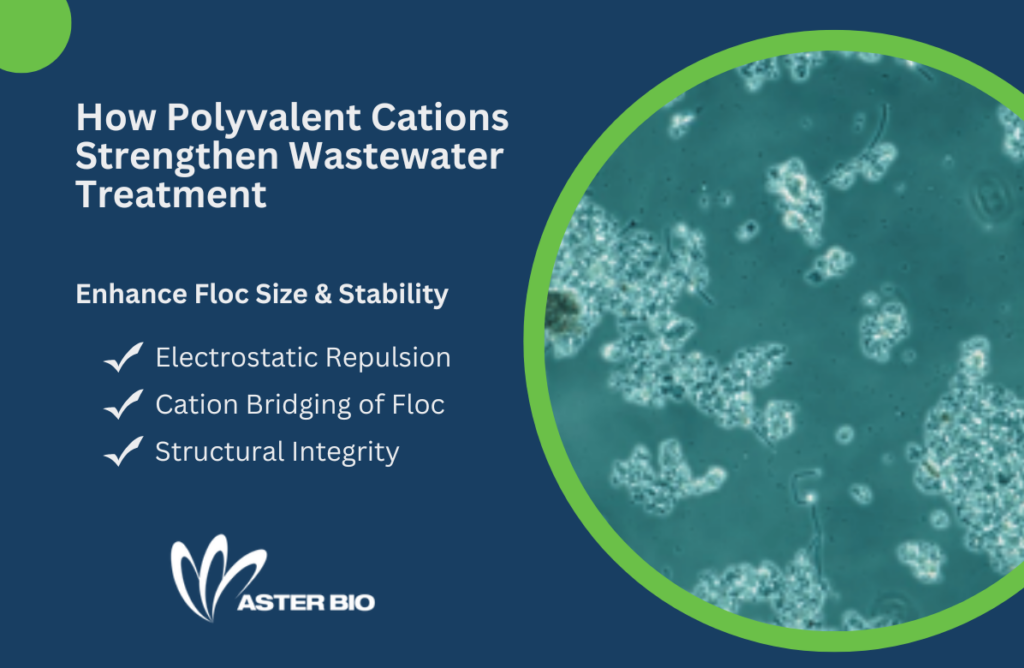
In wastewater treatment, invisible forces shape the performance of entire systems. One of the most powerful—and often overlooked—players in this microbial drama is the polyvalent cation. These positively charged ions, like calcium (Ca²⁺), magnesium (Mg²⁺), and iron (Fe³⁺), are the unsung heroes behind the formation of biofilms and flocs. Their secret weapon? A phenomenon called cation bridging.
What Are Polyvalent Cations?
Polyvalent cations are ions with a charge of +2 or more. Unlike monovalent cations (e.g., sodium Na⁺ or potassium K⁺), which carry a single positive charge, polyvalent cations can bind to multiple negatively charged sites at once. This makes them uniquely suited to stabilize microbial aggregates in wastewater systems.
Biofilms vs. Flocs: Microbial Communities in Action
Before diving into the chemistry, let’s clarify the two key microbial structures:
- Flocs are loose, cloudy clusters of microorganisms and particles that float freely in water. They dominate suspended-growth systems like activated sludge.
- Biofilms are dense microbial layers that attach to surfaces—think trickling filters or rotating biological contactors.
Both rely on a sticky matrix called extracellular polymeric substances (EPS), composed of polysaccharides, proteins, and other biopolymers. EPS and microbial cell surfaces are negatively charged, which creates a challenge: how do these particles stick together?
The Power of Cation Bridging
Here’s where polyvalent cations come in:
- Electrostatic Repulsion: Without intervention, negatively charged particles repel each other, preventing aggregation.
- Cation Bridging: Polyvalent cations act like molecular glue, binding to multiple negative sites and overcoming repulsion.
- Structural Integrity: This bridging forms a stable, three-dimensional network that holds flocs and biofilms together. The higher the charge (e.g., Fe³⁺ vs. Ca²⁺), the stronger the bridge.
Why It Matters: Performance Boosts Across the Board
Cation bridging isn’t just a neat chemical trick—it’s essential for effective treatment:
- Better Flocculation and Settling: Stronger flocs settle faster, improving solid-liquid separation and clarifier performance.
- Stronger Biofilm Adhesion: In fixed-film systems, cation bridging enhances microbial attachment and reduces sloughing.
- Pollutant Removal: Stable aggregates support robust microbial communities that efficiently break down organic matter and nutrients.
The Downside of Monovalent Cations
Not all cations are helpful. Sodium (Na⁺) and potassium (K⁺) can neutralize negative charges but don’t bridge them. This can lead to floc disintegration and poor settling—part of a condition known as viscous bulking.
Takeaway: Polyvalent cations are more than just chemical curiosities—they’re structural architects of microbial life in wastewater treatment. Understanding and optimizing their role can lead to clearer effluent, stronger biofilms, and more resilient systems.
